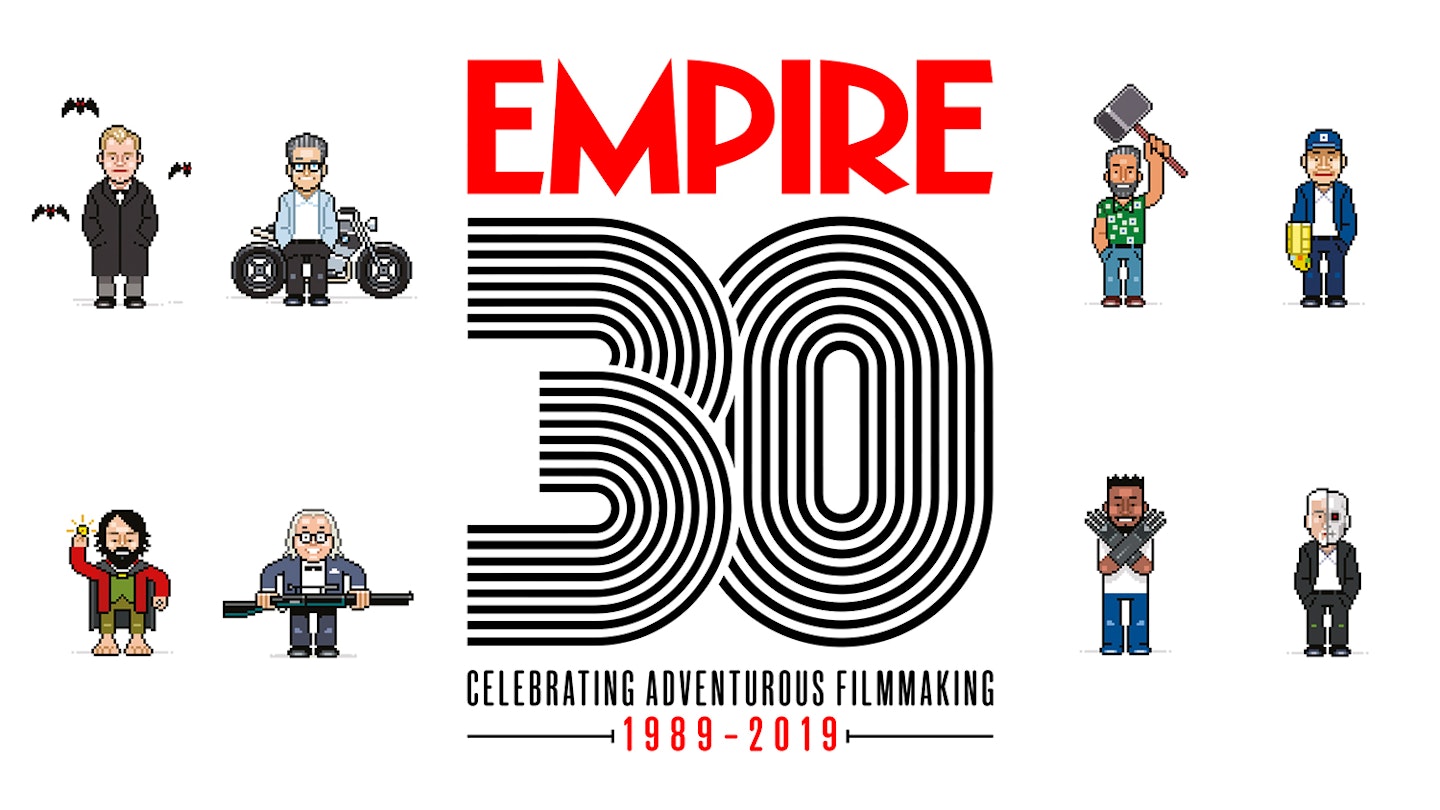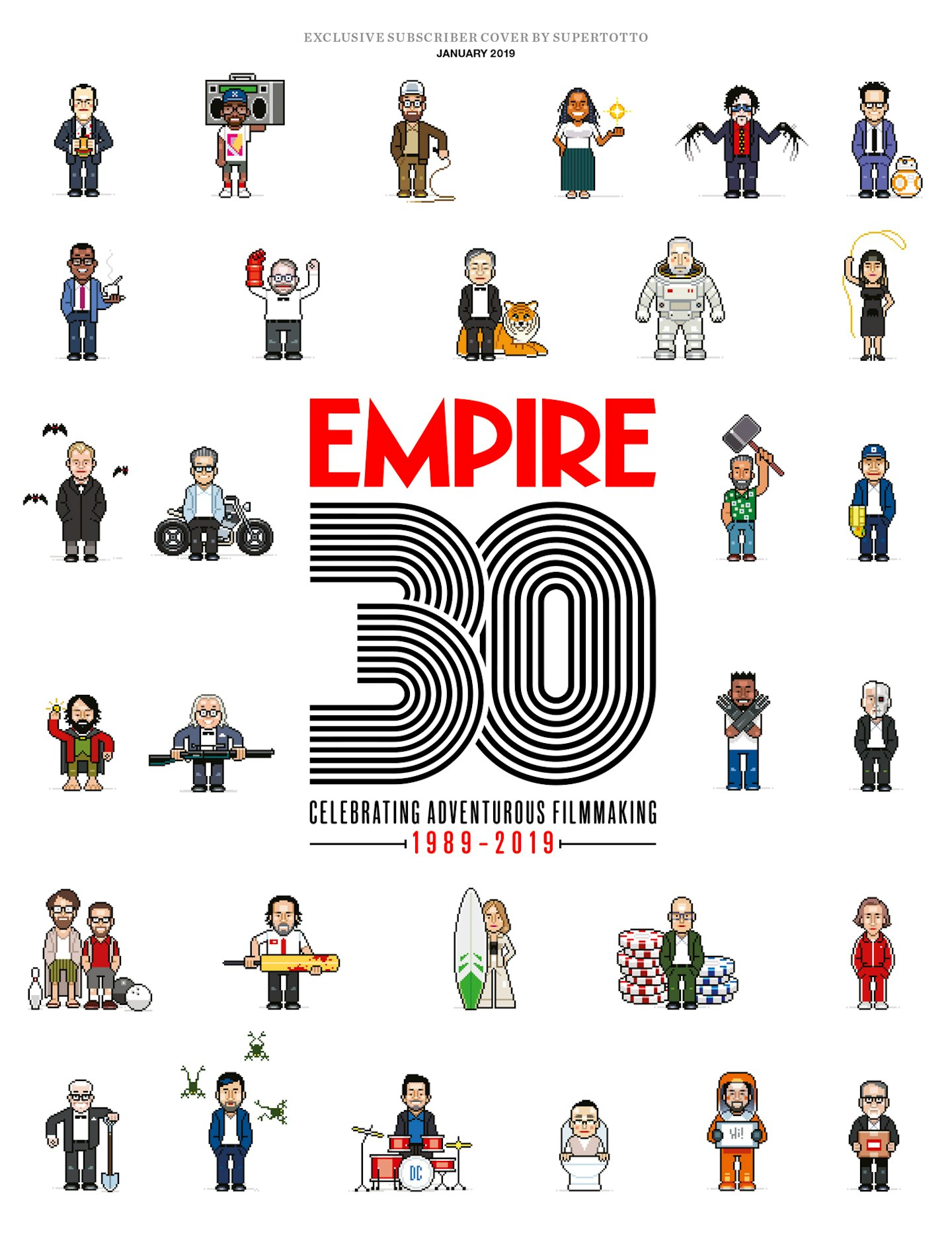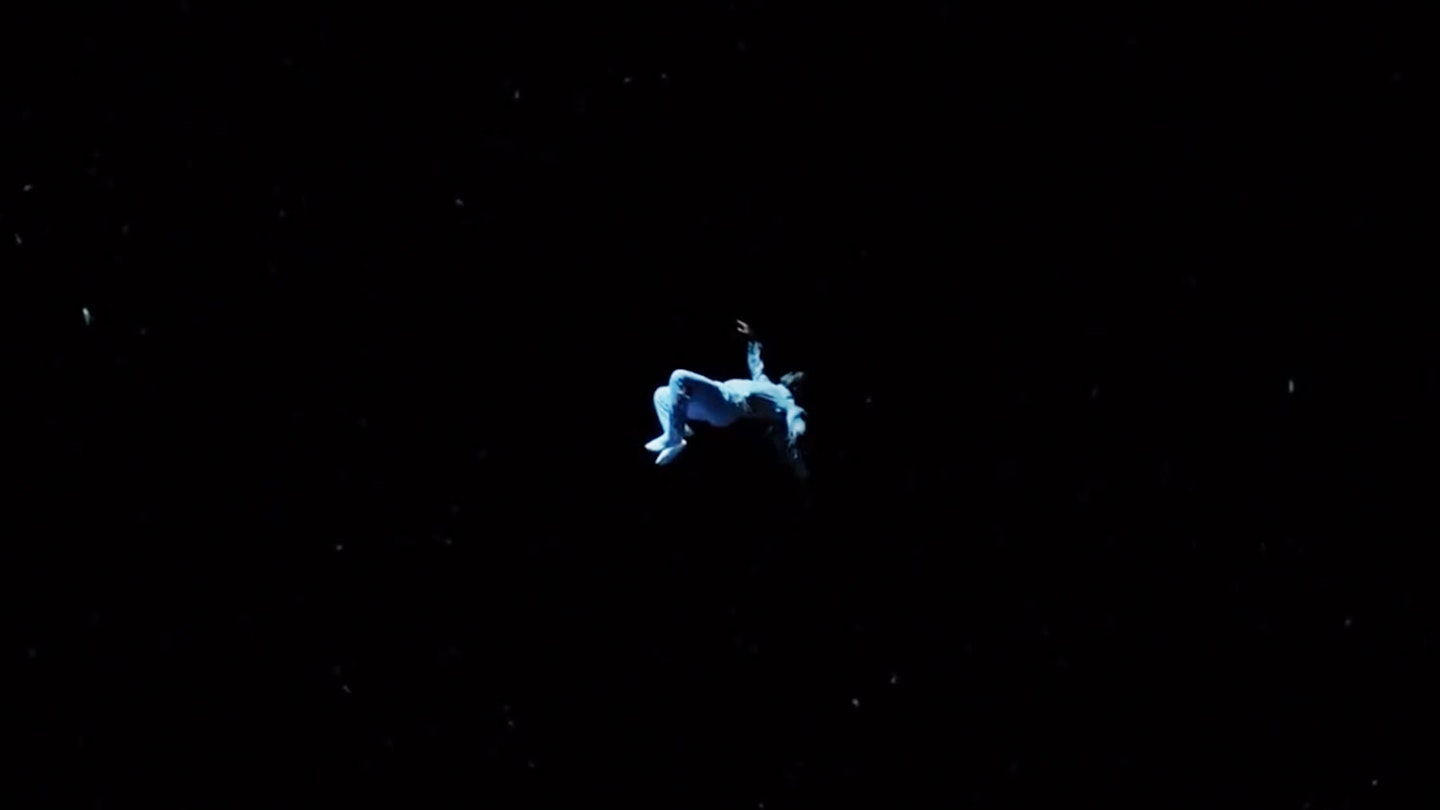As part of our Empire 30 celebrations, Nick De Semlyen spoke to the minds behind the most iconic horror moment of the decade. Originally published in the August 2019 issue of Empire.

Two actors in comfortable armchairs doesn’t sound like the stuff of horror legend. There are no buckets of blood, no levitating demons, nary a chainsaw in sight. Which makes it all the more impressive that director Jordan Peele managed to get under the skin of the entire world with the Sunken Place sequence in 2017’s Get Out. African-American hero Chris Washington (Daniel Kaluuya) is visiting the home of his girlfriend Rose’s (Allison Williams) parents — seemingly liberal, definitely white — and is heading back inside from a late-night smoke when the mother, trained hypnotherapist Missy (Catherine Keener), invites him into her study for a little chat. A chat which turns, almost imperceptibly, into a full-blown nightmare, as she uses a teacup and spoon to freeze his body and drop him into a world of inky nothingness. From the creepy small talk to the shocking surreality of Chris’ plummet into the Sunken Place, it’s a tour de force by Peele and his troupe, who here talk Empire through the shoot and beyond.
Jordan Peele (writer-director): Long before Get Out, I had this nightmarish concept in my head — when you’re falling asleep and it feels like you’re falling for a second, and it kind of jolts you up and wakes you up. So I thought, “Where are you falling? If you didn’t wake up, where would you go?” And that mysterious place always haunted me.
Rusty Smith (production designer): Jordan had this image of a person floating, or falling. It just felt fresh. It was great.
Sean McKittrick (producer): It’s the scene that’s emblematic of the entire theme of the film.
Peele: The Sunken Place actually came a little bit later in the process than one might think. I didn’t really know where the movie was going for several years. And at some point I came about the idea of this metaphorical enslavement, being trapped inside your own body. About 30 minutes into the film, very little has happened in terms of horror pay-off. And so at that point you need it to be the best scare in the film. You need to deliver on your promise right now.
Toby Oliver (cinematographer): When I first read the script, I thought, “This is a fantastic horror movie,” though it transcended that in many ways. The Sunken Place scene was a really interesting thing on the page. It was just written as a journey into our character’s subconscious, but it wasn’t super-clear exactly how that was going to be realised visually.
McKittrick: Jordan first pitched me the story over coffee. That was the first discussion of the Sunken Place and hynotism and the themes of racial suppression. Physically, what the Sunken Place was evolved as the team expanded.
Oliver: It was a great concept that we had to figure out how to realise, with all the constraints that we had: a short schedule, and not a lot of money. How do you make it work on screen?
•••

Oliver: The hypnotising scene happened in the house on location. We had a full day for that.
Smith: We were shooting in Mobile, Alabama, of all places, because of tax credits and all that stuff. The house was so critical. Jordan has called its design “evil feng shui”. It’s WASP-y sinister, with a very sort of upper East Coast, snotty, wealthy, liberal, pretentious kind of vibe to it. When I came across the house, I was like, “Oh my God, this is the place.” It turned out there was a fairly blue-blood, Republican person living there. Luckily they opened the door. And Jordan is extremely charming.
McKittrick: It was the one scene they talked a lot about and rehearsed a lot. During the shoot, it was very quiet. Nobody made noise on set. Almost like you’re doing a closed-set nude scene. “Nobody drop anything. Nobody do anything. Just let it happen.”
Smith: The two matching leather chairs were so hard to find. We spent weeks looking, and finally my decorator found a pair online. Then Catherine, the actress, comes in and says, “No, I don’t want the matching chair.” Like any good actor, she brings something very personal to it.
McKittrick: Catherine was very specific about how the room would be set up. Even down to, “My character wouldn’t have that piece of art on the wall.” She was into it.
Smith: For the teacup, we had planned something completely different.
McKittrick: We went through a lot of teacups.
Smith: On the day, Catherine went on a search and I think she pulled it out of a cabinet in the house. It was poetic, in a way.
McKittrick: It came down to how the cup sounded. That was going to be the iconic thing, and we knew it.
Gregory Plotkin (editor): When I saw the dailies I immediately called the sound mixer and said, “I need you to go in and shoot audio of the teacup.” He had to go in on a Saturday, but I said, “You gotta shoot it in the room.” Regardless of whether you saw the cup or not, I thought it was really important for the audience to hear it, to know that she was the puppet master, pulling his strings, slowly pulling him into the web.

McKittrick: It had to sound scary, but also numbing. It’s a sinister, repetitious, scrapy stir.
Oliver: When we were shooting that scene, to build up the tension, we started with eyelines a bit wider. By the end, the eyeline is almost directly down the barrel of the camera. I don’t know if that was part of the plan in Jordan’s mind. But luckily we did because it became that iconic shot where he’s got the tears and he’s staring straight at the camera before he drops down into the Sunken Place.
Plotkin: They only did two takes of it. Daniel nailed it on both takes.
Smith: We shot the Sunken Place itself on the last day of photography. It might even have been the final thing we did.
Peele: The shots had to be pulled off perfectly for it not to end up feeling like some kind of corny greenscreen thing. It was nerve-wracking and I knew there were a lot of ways to get it wrong. So we were very meticulous.
Oliver: I mentioned to Jordan something we could use: the dry-for-wet technique. You shoot underwater scenes on a dry stage, because it’s so much cheaper and easier. It involves suspending on a wire, and shooting at a higher frame-rate to create a sense of floating. Daniel’s clothes were chosen partly for the Sunken Place. His sweatshirt would flop around in the wind we create to sell the idea.

Peele: Daniel was very in tune with what we needed to get. It was tough for him. We had him essentially hanging from wires all day long, which ends up being very physically demanding.
Plotkin: We started with these simple visual effects in the Avid, where I would shrink Daniel’s image in the frame and make him smaller and smaller and smaller against this huge, dark backdrop. As soon as we did that, we found the key to the scene. He needed to feel small and cut off in this vast place.
McKittrick: Even as we moved into post, Jordan was specific about how many granules float through the air. I remember sitting in a VFX session with him going, “I want to get rid of that granule and that granule.” There are literally hundreds of granules! But I understand it. It’s the single most important, iconic visual representation of the film.
•••
Plotkin: People want to talk about the Sunken Place all the time. I’m very proud of it.
Peele: [The sequence’s cultural impact] was very validating as an artist. It hit me like a ton of bricks when it hit me. As an artist, when you have an emotional and intellectual reaction to something, to an idea — if you translate it right, the audience will too.
Smith: The reaction was visceral in the theatre. I saw it in Sarasota, Florida, and I’ll never forget the clusters of people talking and arguing that I saw as I came out. I thought, “Oh my God.”
Oliver: The first time I saw it with an audience was at this special secret screening at Sundance. I had seen the movie before, at the lab. But was the first time with a packed house, and people were yelling and screaming. There was a massive response, a real buzz. It was a rare, exciting thrill.
McKittrick: You could feel it in the room. People were just shocked. They’d never seen a movie like this. What’s funny is that people want to understand it. “What does it mean? How does that reflect on my life?” That’s the best part, that it starts a conversation about where we are today.

Peele: There are many different social phenomenons that the Sunken Place represents, but in the moment I was thinking about people who had been locked away for having some weed. And I was a weed monster! There’s a cultural epidemic of black men being taken and locked away in dark places, where we don’t have to acknowledge or think about them. Realising that was the first time I realised the potential importance of this piece of expression.
Oliver: So many people have a connection to the movie — all the memes and everything else, it’s really quite astonishing. With all the restrictions that come with being a pretty low-budget movie, you have to distill what’s really important. You don’t have money for fluff.
Peele: You want to be able to listen to what your mind, body and soul are telling you enough to have a catharsis that you can then translate into screen. I left realising that, if I’m writing something and I don’t get to a place as transformative as I did when writing the Sunken Place, then I’d better figure out how to.

